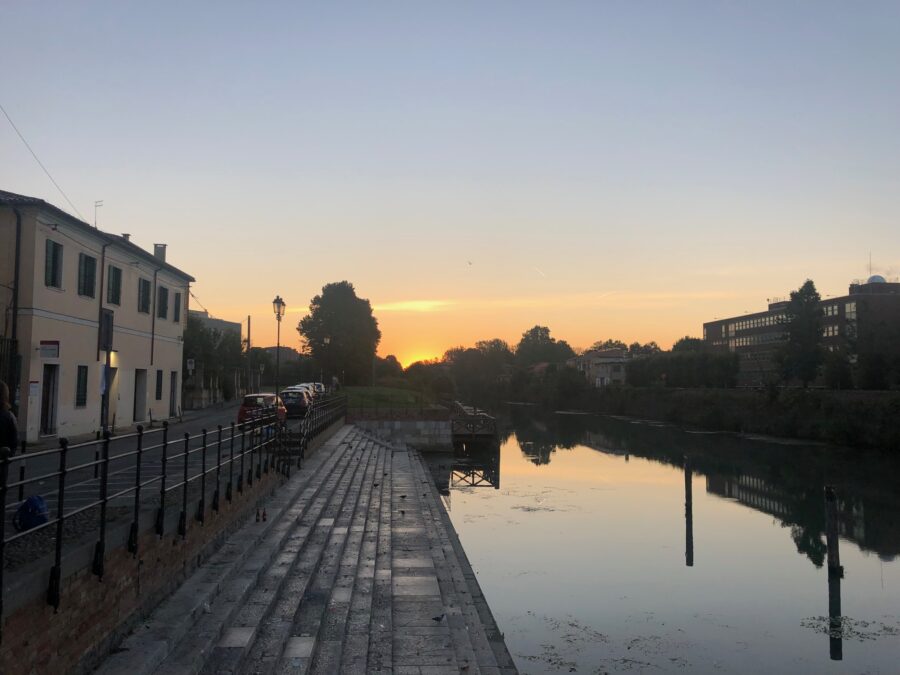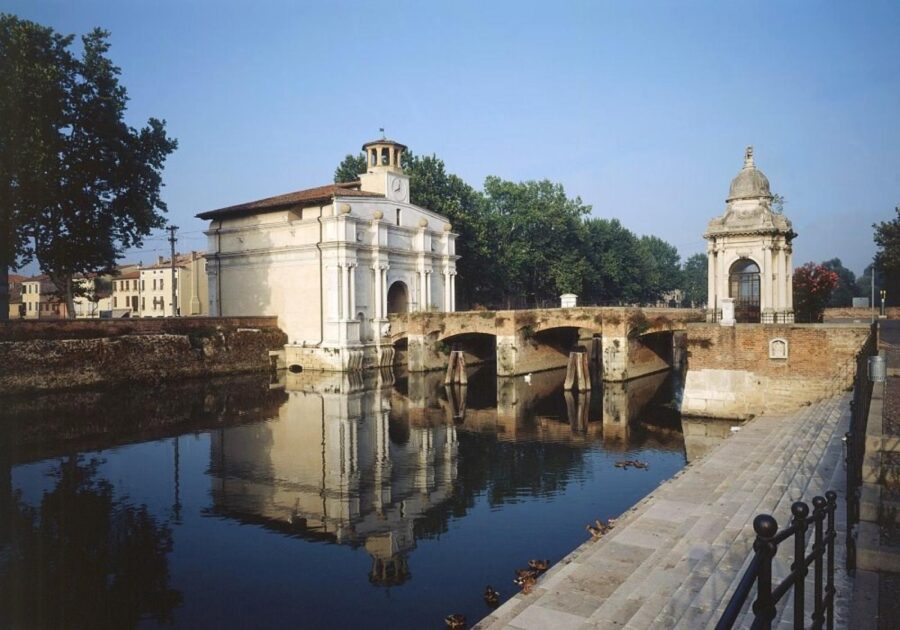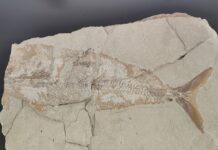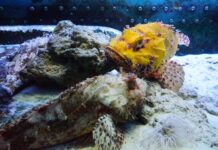Il Burchiello with the cruise along the Naviglio of Brenta was one of my dreams closed in a drawer since I attended elementary school. A friend of mine talked about this experience in class and since then I have wanted to try the navigation on the Riviera preferred by the Venetian nobility to admire the monumental villas where people dedicated themselves to “vacation idleness” in the summer.
On the Burchiello sliding on the Brenta
Of course, a lot of years have passed since then but thanks to the collaboration with Il Burchiello I was able to pull this dream out of the drawer and make it come true together with Michele and Otto on a splendid day in mid-October.

We arrived in Padua in the morning greeted by a warm sun and a light haze. The departure is from the Portello river port characterized by an elegant staircase in white Istrian stone overlooking the Piovego Canal, a thirteenth-century waterway built to connect the Bucchiglione to the Naviglio Brenta.

The meeting point is fixed there near the aedicule of Santa Maria dei Barcaioli but, due to the breakdown of the Lock of Stra, we have reached aboard a bus the most monumental and princely of the residences of the Riviera del Brenta, Villa Nazionale Pisani. And only after visiting what is called the small Venetian Versailles did we board the Burchiello.
The boat takes its name from the ancient boat that was pulled upstream from Padua with horses to Fusina at the mouth of the Brenta and then rowed across the lagoon to reach San Marco in Venice.
The original burchielli no longer exist because they were destroyed by the French so today the journey is made aboard a modern and comfortable boat, crossing 9 swing bridges and 5 locks, real water lifts, which allow you to go up or down the difference in height of ten meters existing between Venice and Padua.
But let’s get back to Villa Pisani, the noble residence represents the apex of Venetian grandeur on the Brenta, built in the first half of the eighteenth century without spared any expense by one of the richest families in Venice, that of Almorò and Alvise Pisani, elected doge in 1734.
Started by Girolamo Frigimelica Roberti it was completed by Francesco Maria Preti. The result? 168 rooms decorated by the most famous artists of the time, including the monumental ballroom frescoed by Tiepolo.
We were unable to visit the interiors due to the restrictive Covid regulations but our highly trained guide Silvia Vallerin gave us a detailed description while telling us the troubled history of the villa which was sold to Napoleon who lived there for a short time with Josephine Beauharnais and then donate it to his stepson Eugenio, viceroy of Italy. During the “French” phase, some of the apartments were transformed according to the taste of the time so there are rooms in both Baroque and Empire style.
In 1814 the Queen of the Venetian villas, as it is defined, became the property of the Habsburgs and the favorite holiday resort of the Austrian Empress Marianna Carolina who hosted the elite of the European aristocracy. It then passed to the Savoy family who ceded it to the Italian state in 1869. In the eventful history of the villa there is also the first official meeting between Mussolini and Hitler which took place there in 1934.
The park spread over an area of more than 10 hectares is wonderful. Walking through the luxuriant greenery you can see the various structures of the gardens that follow the history of the villa and its owners: the French model that recalls the palace of Versailles, the English grove added in the Napoleonic era and the Austrian influence with the great attention dedicated to botany in pots and in the ground, greenhouses and the insertion of large trees.
In the park there are original architectures, from the Coffee House to the Stables, from the Esedra, a building decorated with statues representing the liberal arts from which six paths intersect and from where two wisteria galleries start, to the famous Labyrinth of tall box hedges up to the precious collection of citrus fruits in the Orangerie and in the Tropical Greenhouses.
The Labyrinth of Love is one of the largest in Europe and in its nine concentric circles it is easy to get lost! Spicy stories that the guide told us about what happened in the parties during the games between ladies and knights. In the labyrinth, on the turret decorated with the statue of Minerva, there was a lady who gave directions to the knights to be reached: the right ones to the lover, the wrong ones to the others.
The construction of the icebox on an artificial hill surrounded by a moat dates back to 1839, the winter water of which froze and, once cut into blocks, was kept inside the hill.
The long swimming pool in the center of the villa’s park, on the other hand, was built in 1911 for hydraulic studies by the Hydrographic Institute of the University of Padua and embellished in 1913 with a hemicycle decorated with statues.
Leaving the villa, we got on board and began our navigation among the green embankments dotted with dozens of private jetties.
From the second half of the sixteenth century until the fall of the Republic of San Marco at the end of the eighteenth century, the Riviera del Brenta became an appendage of Venice on the mainland, suspended between rural life and worldliness.
The residences built along the Naviglio, an ideal extension of the Grand Canal, combined the functions of a farm and holiday home for the “affluent Venice” that moved to the banks of the Brenta to spend the summer and go and visit villas from party to party.
The ideal way to relive this atmosphere is a cruise aboard Il Burchiello. While the boat proceeds slowly, the elegant facades of the villas pass by, crowned by the green of the weeping willows that touch the water on which swim ducks and swans that have often caught Otto’s attention.
A first overcoming of the water level is represented by the Dolo Lock: watching the water go down in these navigation basins according to a centuries-old principle is truly fascinating!
The navigation locks were already known by the Egyptians but it was Leonardo da Vinci who perfected their operation which is still based on the principle of communicating vessels: the boat enters a chamber closed by two doors, one upstream and one downstream, where the water rises or escapes to reach the external level. And when this is reached the door is opened and the boat continues its journey.
Dolo is the most characteristic town and from the river you can see the oldest part, the Lower Island, between the two branches of the canal, the old Squero where boats were built and repaired and sixteenth-century mills.
The second stop is Villa Widmann, after passing Mira, where there is the greatest concentration of villas, and the homonymous Lock.
Villa Widmann Rezzonico Foscari is a complex formed by the manor house, with frescoes and rococo-style furnishings, a large barchessa and a splendid park with stone statues and fountains. Outdoors, the rich Widmann merchants had the comedies of Carlo Goldoni performed, while the small delightful ballroom frescoed by Giuseppe Angeli could only accommodate a small number of dancers.
On the opposite bank stands the imposing Barchessa Valmarana, once connected to the villa of the same name which was demolished in 1908 by the owners to avoid paying the tax on luxury homes.
The lunch break takes place in Oriago at the “Il Burchiello” restaurant and then the cruise resumes admiring the alternation of old houses and monumental villas along the canal such as Palazzo Mocenigo and the sixteenth-century Villa Gradenigo.
Continuing, behind a bend in the canal, appears haughty and solitary Villa Foscari, known as the Malcontenta, one of the most beautiful creations by Palladio, which stands on a high base like an ancient temple.
Palladio built it in 1554 at the request of the brothers Alvise and Nicolò Foscari, descendants of Doge Francesco Foscari: it is the only residence designed by the famous architect in the province of Venice.
The design of this residence reflects the characteristic typology of his villas: a central plan on three floors perfectly symmetrical and with a majestic loggia. The main floor is decorated with a grandiose cycle of frescoes by Gian Battista Zelotti that show off softer colors than those found in the other Venetian villas. The reason? Silvia explained it to us: while the French had tried to tear them from the walls, the Austrians covered them with lime.
After years of total decay, the villa was restored by the American Albert Landsberg who bought it in 1924, while in 1974 it was bought by the descendants of the Foscari family. So after 4 centuries, Malcontenta returned to Palladio’s former patrons and today the owners are Antonio, professor of History of Architecture, and his wife Barbara, architect and interior designer who is responsible for the current furnishings in the central hall and in the four side rooms. Unfortunately we were unable to document the interiors as photography is not allowed.
But we reveal that in one of the rooms there is a portrait of the woman to whom the villa owes its name according to legend: the Malcontenta, a lady of the Foscari house relegated to its walls because she is forced to serve her sentence in absolute solitude. for leading a dissolute and licentious life. For some, however, it derives from “Brenta badly contained”, because here the river often overflowed and the area would have been called this way even before the construction of the house.
Leaving Malcontenta, Il Burchiello heads towards the oldest of the locks, the seventeenth-century Conca di Moranzoni and then to Fusina where it flows into the Venice Lagoon and crosses it to the San Zaccaria pier: the spectacle of the city bathed in the golden light of sunset is the worthy conclusion of this extraordinary journey through history, art and nature in the footsteps of the Venetians of the past.
Il Burchiello
Via Porciglia, 34 – Padova
Info: +39 049 8760233
www.ilburchiello.it – info@ilburchiello.it













